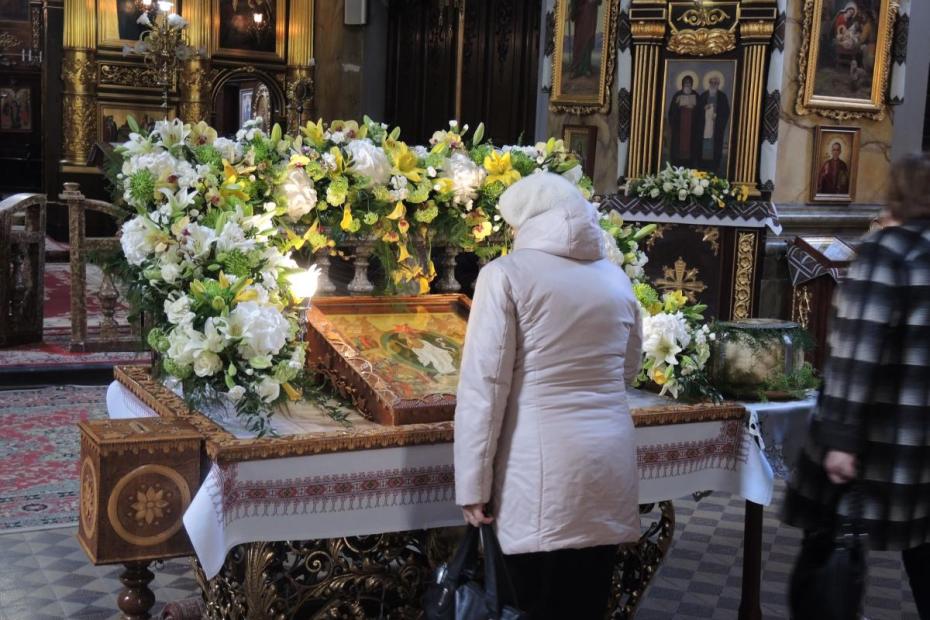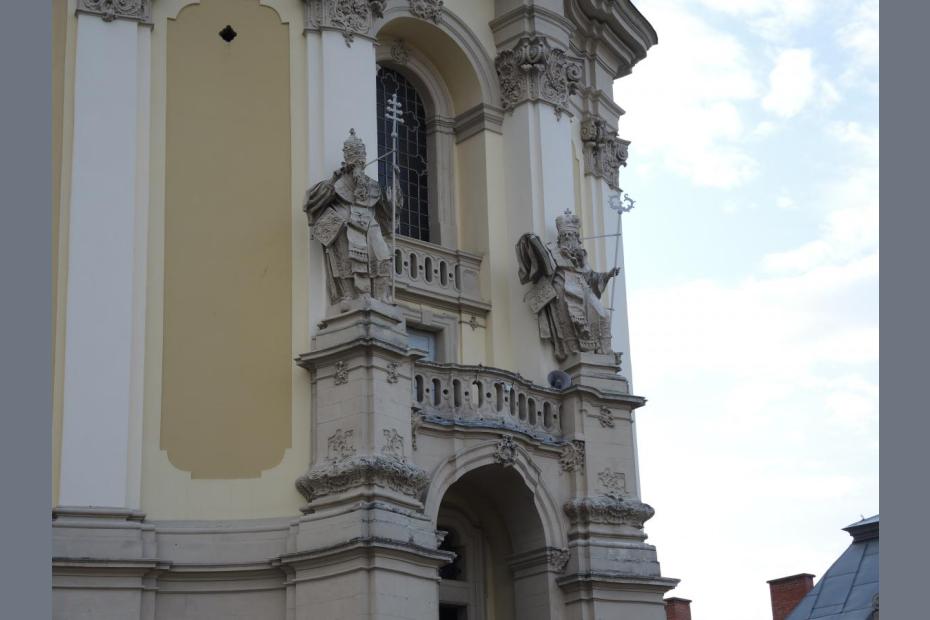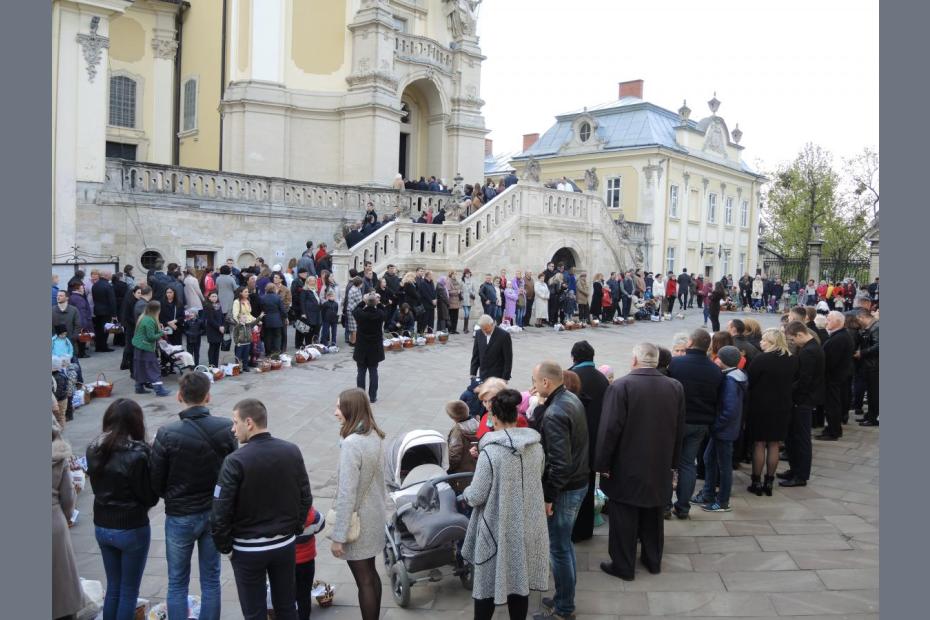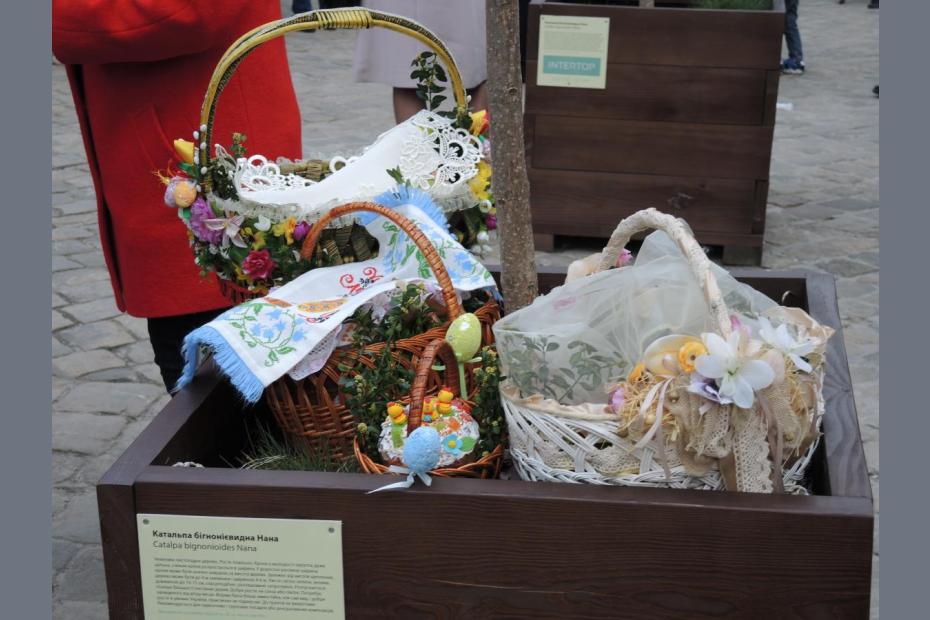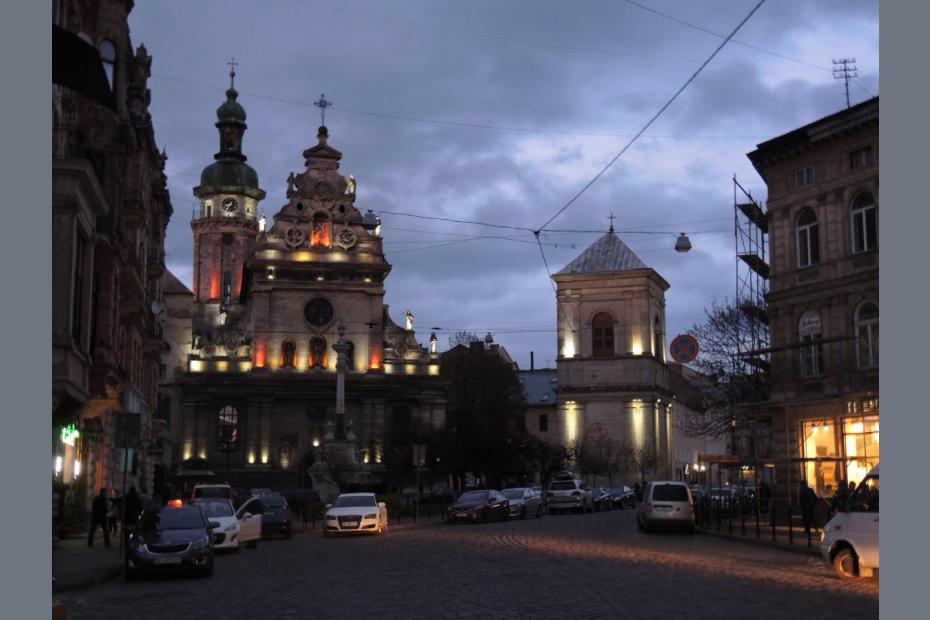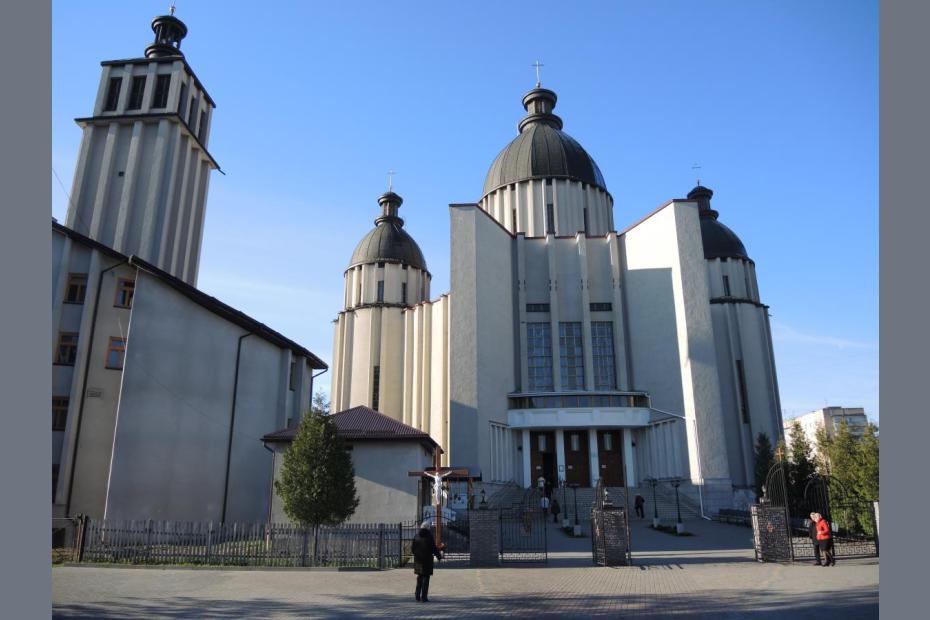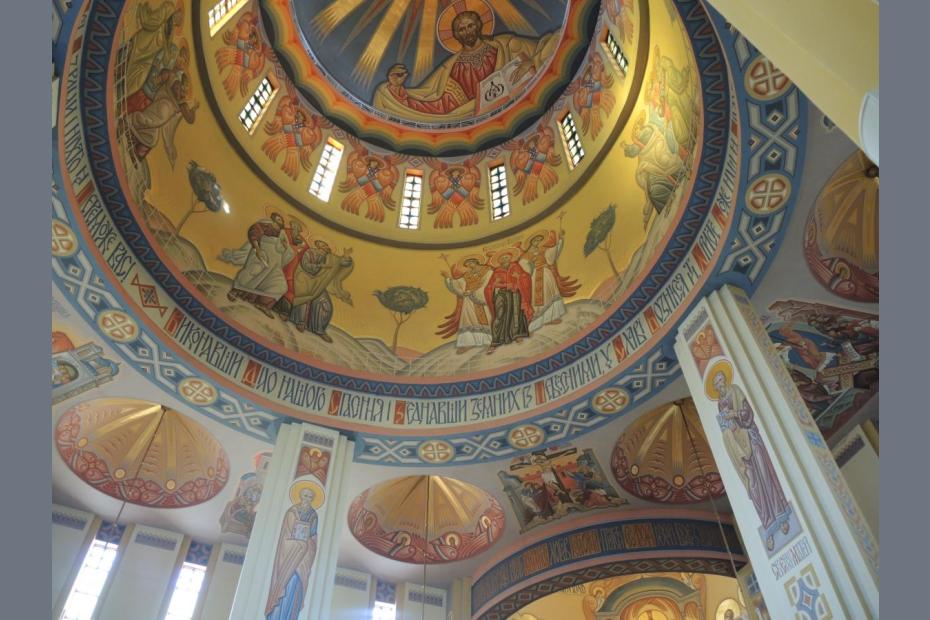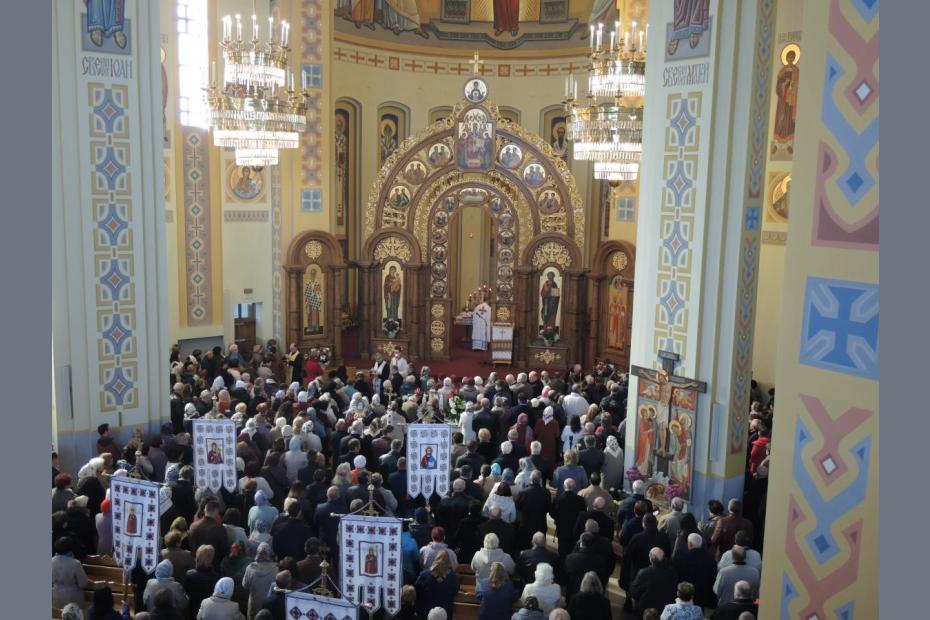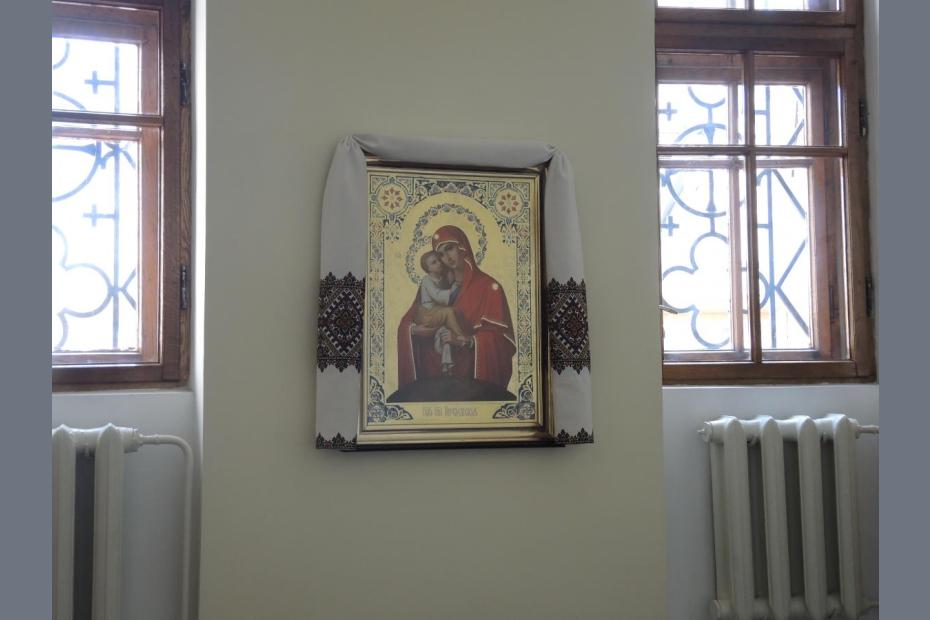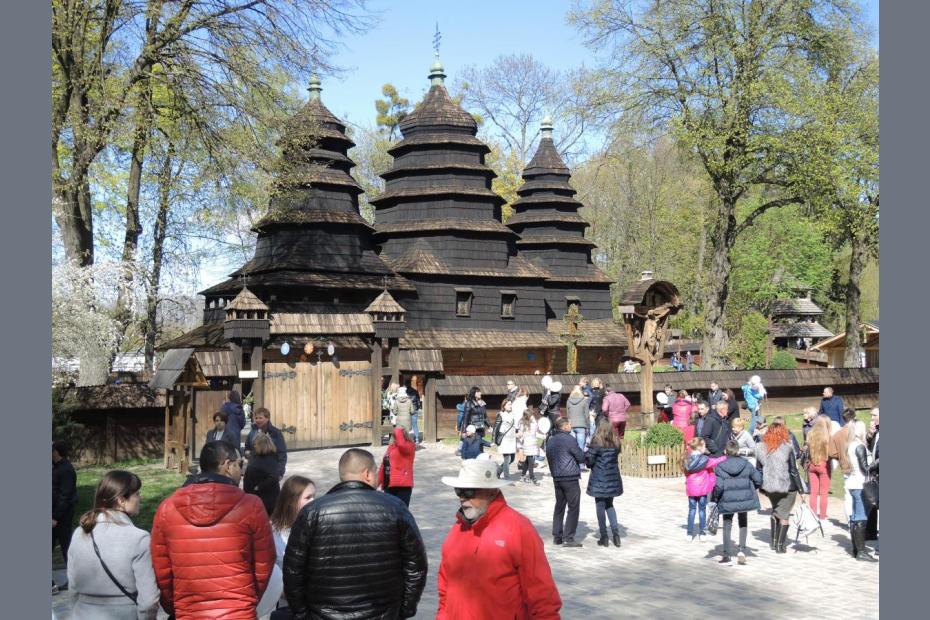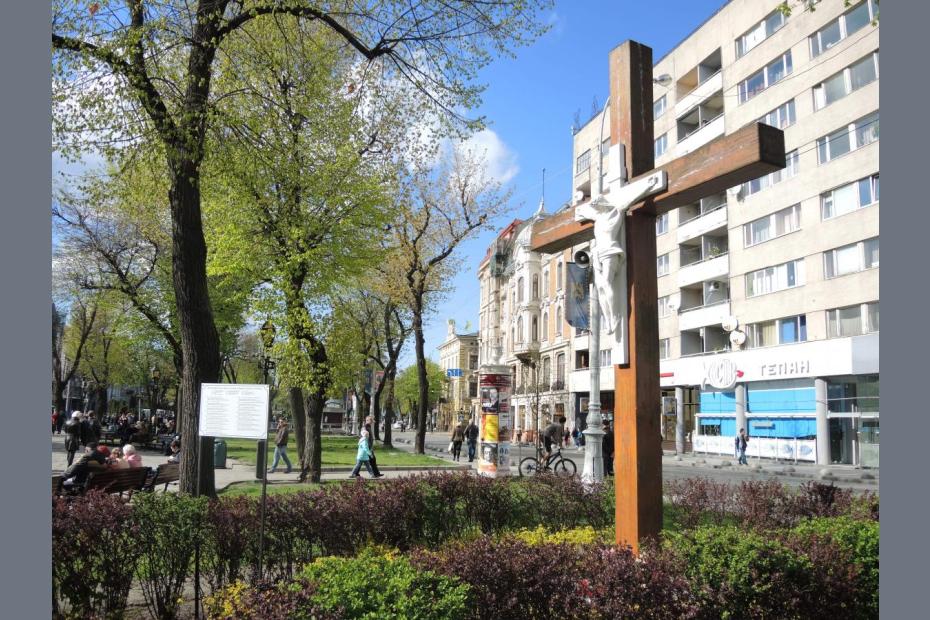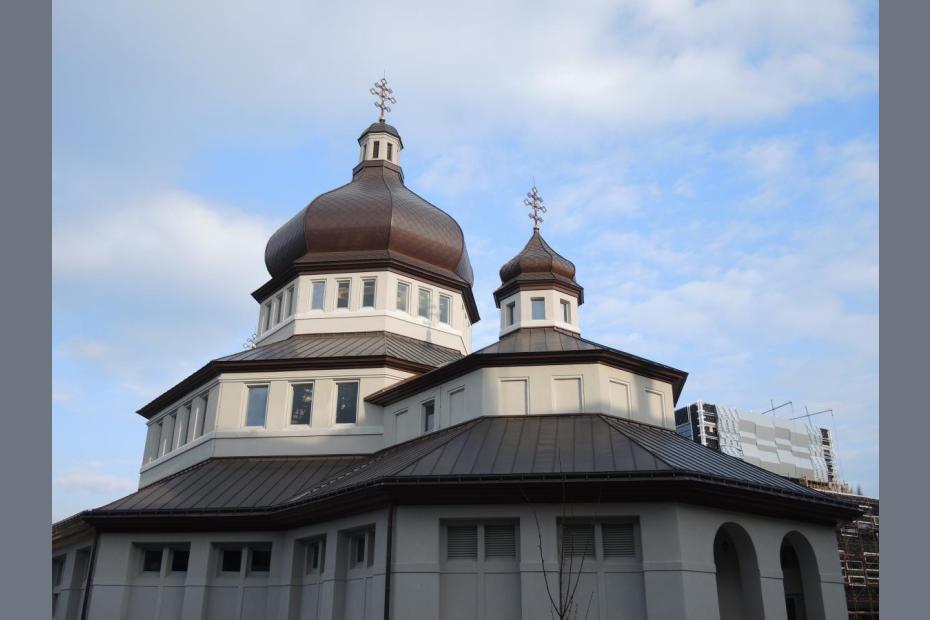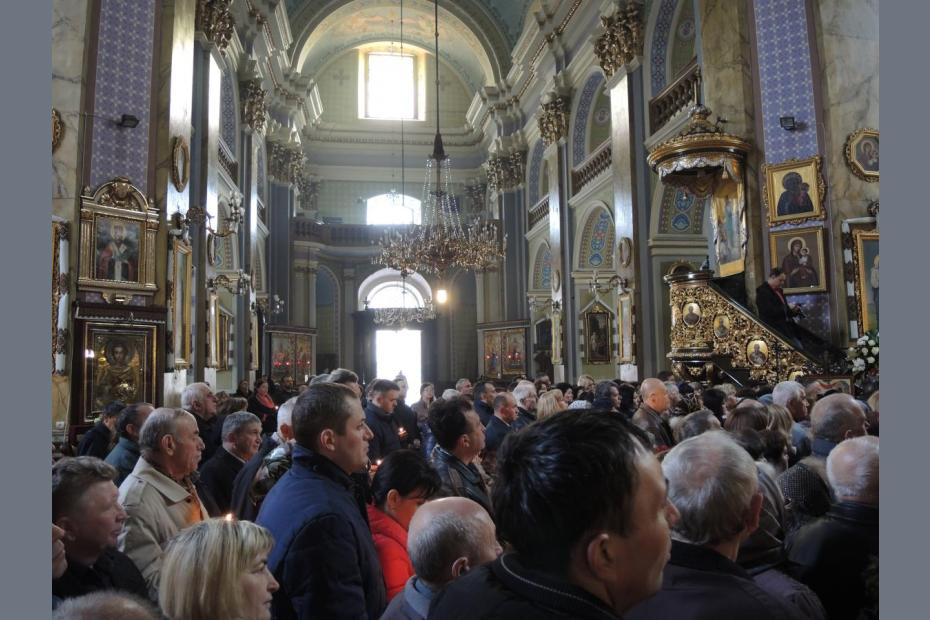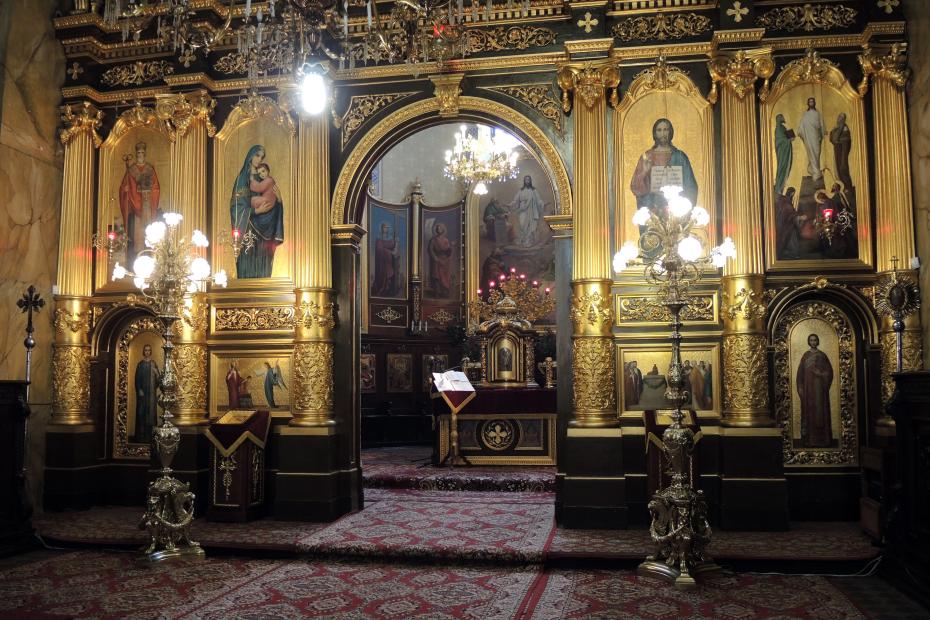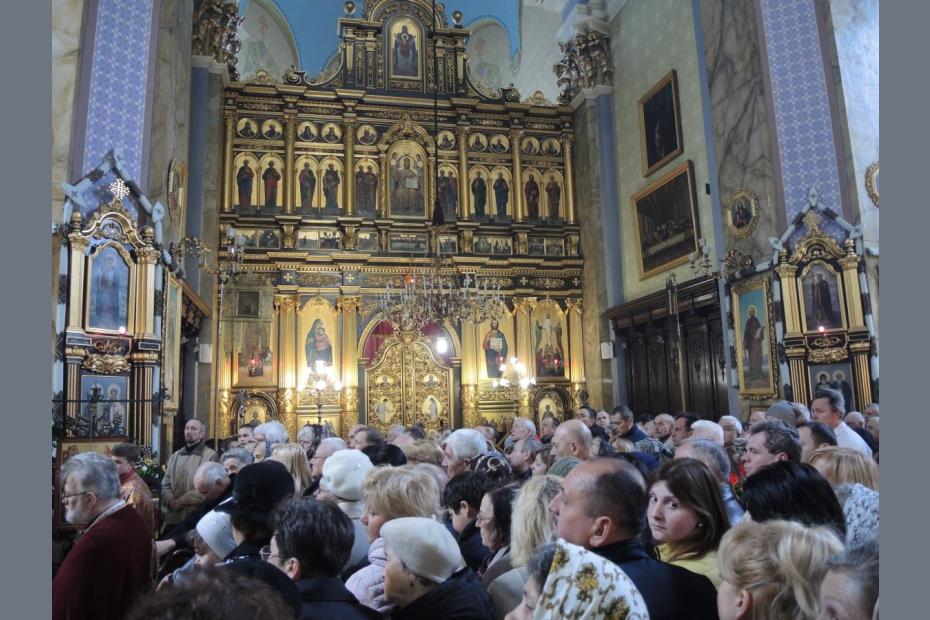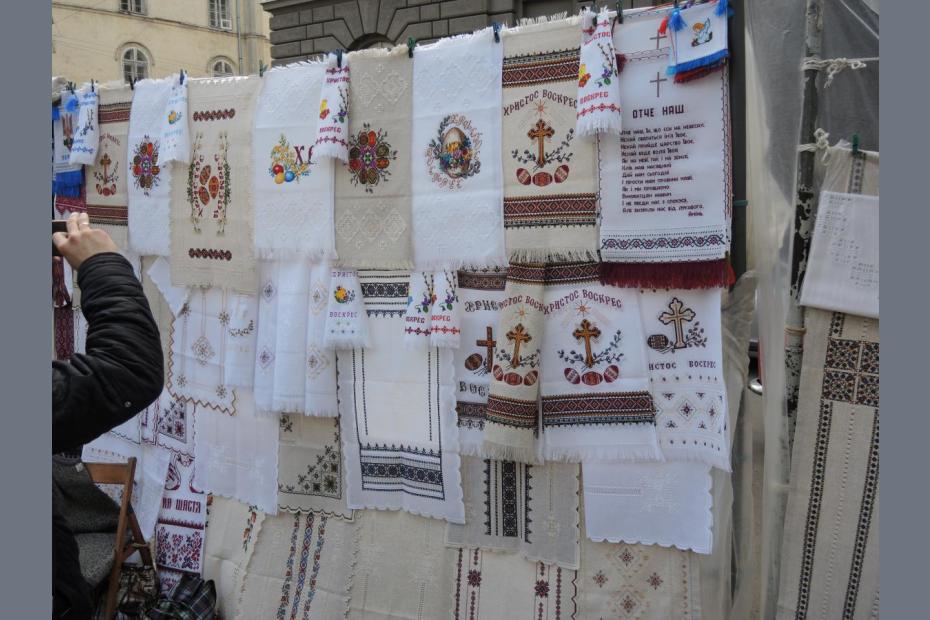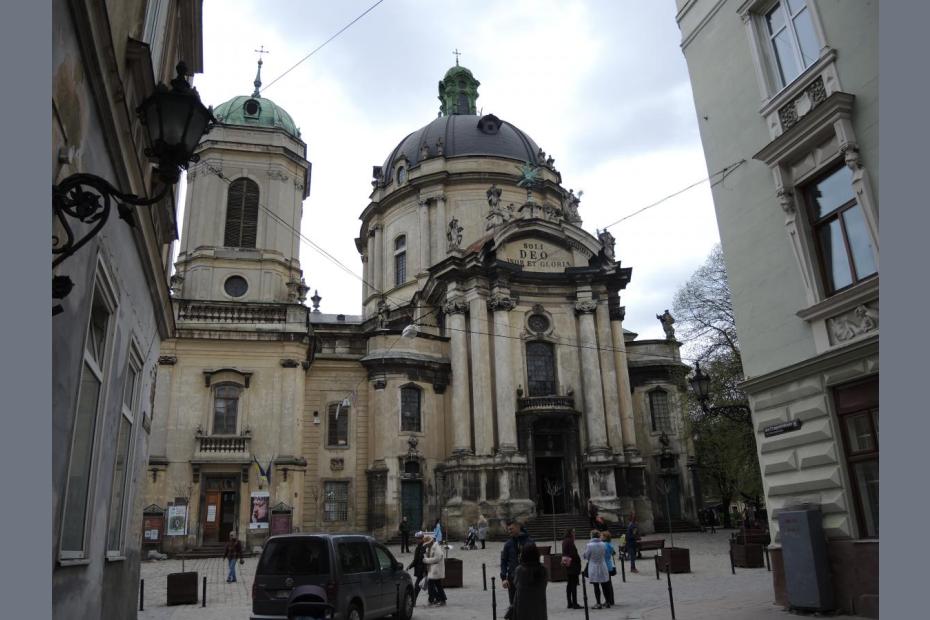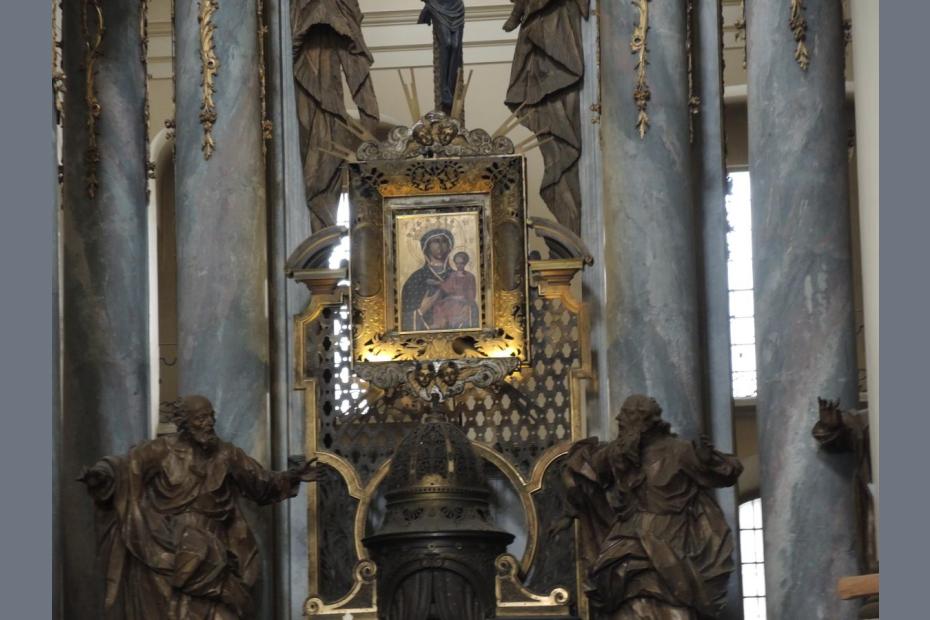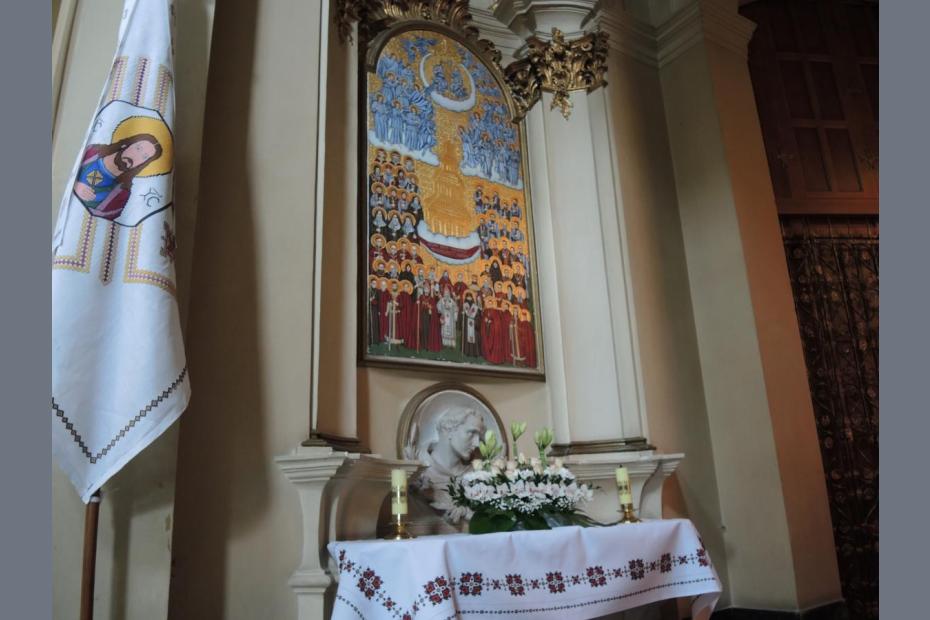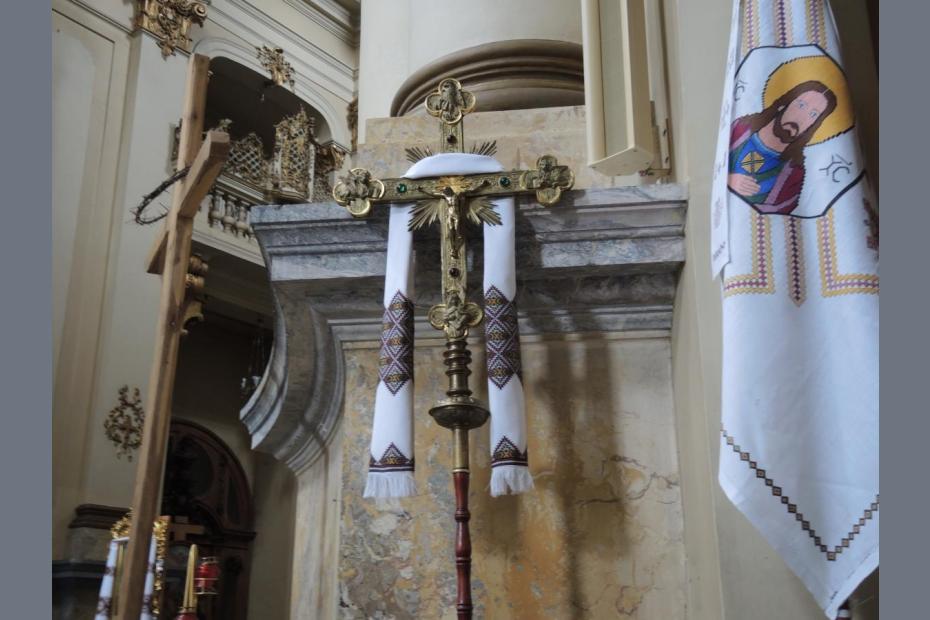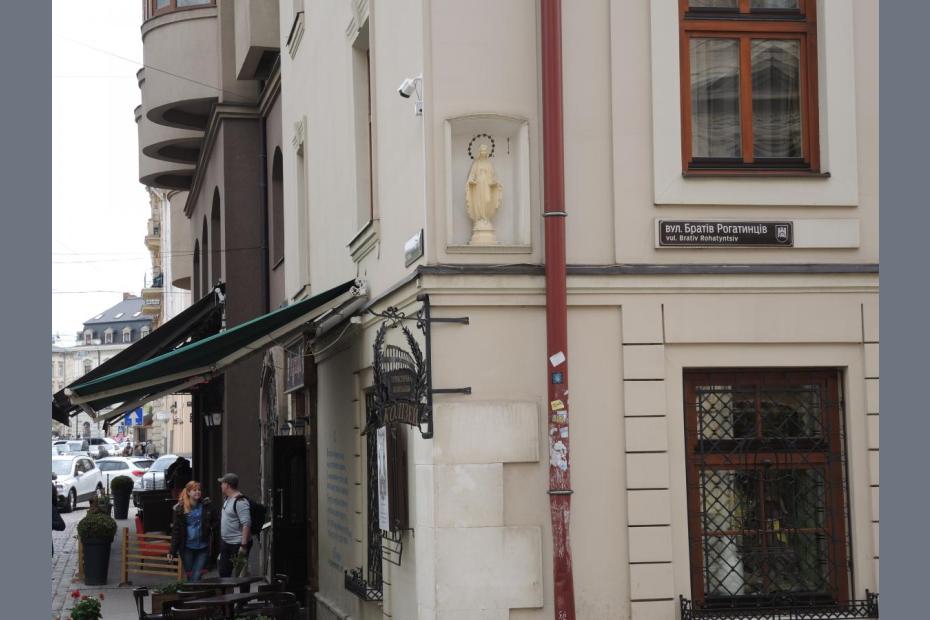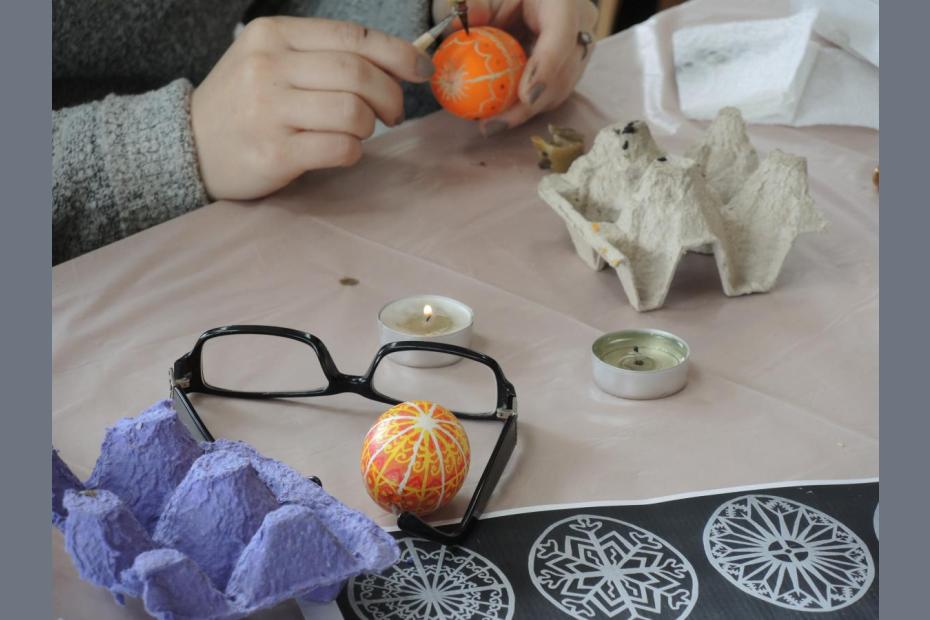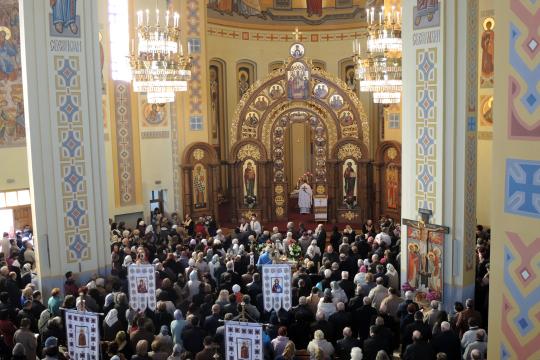Ukraine is the second largest country in Europe, spanning territory where Eastern and Western European cultures meet.1 According to most etymological interpretations, the country’s name derives from an ancient word for “borderland.”2 Ukrainians today have a strong sense of national identity, despite the fact that for most of the last millennium its territory has been other empires’ borderlands, ruled by neighboring great powers, and despite the fact that powerful challenges to the country’s boundaries endure. In 2018, as this is being written, the eastern part of the country has been the scene of war with Russia, which seeks to re-incorporate Ukrainian territory in its sphere, as it has already done in Crimea.
Kyivan Rus’, the ancient principality from which Ukrainian identity derives, played a crucial role in the history of Eastern Europe. In 988 its ruler, Prince Vladimir, became Christian and launched the spread of Orthodox Christianity among the East Slavic peoples, including in Russia, Ukraine and Belarus.
Contemporary Ukraine is home to three Catholic Churches—two Byzantine rite and one Latin rite—and two Orthodox Churches. The largest Catholic Church by far is the Ukrainian Greek Catholic Church (UGCC). There are many Roman (i.e. Latin rite) Catholic churches in the western part of Ukraine, but that faith is usually associated with ethnic Polish identity, and in recent years, as many ethnic Poles have migrated westward, the Latin-rite Catholic presence is said to be declining. In Zakarpattia Oblast, a Ukrainian region south of the Carpathian mountains in the southwest region of the country, the Ruthenian Greek Catholic Church is the dominant Catholic Church, counting 320,000 members. Zakarpattia, or Transcarpathia, was governed by Hungary for more than a millennium, and has a somewhat distinct cultural history, but has been part of Ukraine since 1945. Their link to Catholicism dates to the Union of Uzhhorod in 1646. (The entries on Ukraine deal at present almost exclusively with the Ukrainian Greek Catholic Church.3 We hope to be able to add more on Zakarpattia’s Mukachevo, or Ruthenian Greek Catholics, in the future.) Today, though they share their embrace of the Byzantine rite, the Ruthenian Catholic Church is distinct from the Ukrainian Greek Catholic Church, though some leaders wanted to unite the Mukachevo eparchy with the Ukrainian Greek Catholic at the time the Churches were being legally reinstated in Ukraine in 1990.4
Catholic presence is far stronger in the western part of the country than in the east. Some 85% of Ukrainian Greek Catholics (almost 3.25 million) live in the western Ukrainian lands that were once part of the Kingdom of Galicia. In 2018, the Religious Information Service of Ukraine reported that more than half of the religious communities in the western oblasts (provinces) of Lviv, Ivano-Frankivsk, and Ternopil are Catholic, though it did not offer population figures there. The UGCC strongholds are commonly said to be the most religiously committed regions of the country. The Kyiv archeparchy (archdiocese), in the middle of Ukraine, now claims 500,000 Ukrainian Greek Catholics. Odesa claims 100,000, but the eastern eparchies (dioceses) of the country, including Crimea, report only 12,000.5
Historical background
Church tradition has it that St. Andrew the Apostle first preached the Christian message in the Ukrainian heartland in the early years after Jesus’ death, but in practice the establishment of the faith can be traced to its adoption by Princess Olga of Kyiv, and later by her grandson, Vladimir (Volodymyr) of Kyiv, who made it the state religion following his own conversion. Vladimir’s emissaries, having traveled to Constantinople to learn about the faith, are famously reported to have said that the Byzantine liturgy they witnessed there was so beautiful that "We no longer knew whether we were in heaven or on earth." The year of Vladimir’s baptism, 988, is commonly cited as the year when Christianity was established in the lands that are now Ukraine and Russia.
When the Great Schism divided the Eastern and Western Churches in 1054, the Kyivan Church sided with the Orthodox East. In 1596, when most of the western half of modern-day Ukraine was ruled by Poland, a group of bishops from the Orthodox Church returned to communion with Rome through an agreement known as the Union of Brest, which established the Ukrainian Greek Catholic Church.6 The designation “Greek” did not refer to the ethnicity of the believers, but rather to the fact that the Eastern “Greek” or “Byzantine” liturgy of the Orthodox Churches was preserved in the Union as the liturgy of this Catholic Church. In the following century more dioceses accepted the Union, and the Greek Catholic Church flourished across a broad swath of what is now Ukraine.
In the late 18th century, Poland was partitioned, giving the Russian Empire control over most of the territory of present-day Ukraine, except for the regions of Galicia (Halychina in Ukrainian) and Transcarpathia (Zakarpattia), which became part of the Austrian Catholic Habsburg empire. Russia imposed Orthodoxy in place of Catholicism in the lands it ruled, but the Greek Catholic Church continued to flourish in Galicia and Transcarpathia, alongside the Roman Catholic Church. The building and educational projects of the Austro-Hungarian empire transformed Galicia. The many baroque churches that survive from the era bear witness to that history and help define the visual culture of Ukrainian Catholicism. Educational reform and education of clergy made Catholic clergy the local intelligentsia of the time.
The late 19th and early 20th centuries were a period of intensive migration from Galicia to the Americas in search of land and work. But the 19th and early 20th centuries also saw the birth of a powerful Ukrainian nationalist movement, led by Galician Greek Catholics. In the early 20th century, under the leadership of Greek Catholic Metropolitan Archbishop Andrei Sheptyts’kyi, “the church quickly became an instrument of the Ukrainian national cause.”7
Those aspirations were eventually thwarted: the 20th century was ultimately a time when Ukraine found itself repeatedly on the front lines of war. In 1918, when the Austro-Hungarian empire collapsed following World War I, western Ukraine came under Polish control. Lviv, the Galician capital, was a religiously diverse city, with a large ethnic Polish Roman Catholic population, a smaller Greek Catholic population, and a significant Jewish population.8 Central and eastern Ukraine came under Soviet control, and was subjected during collectivization to the massive, genocidal famine known as Holodomor.9
Twenty years later, from 1939-1944, Soviet invasion of Galicia, then German invasion of the whole of Ukraine, then a final Soviet invasion of Ukraine wreaked havoc. One-sixth of Ukrainians died; 60% of Ukrainian Jews, including 90% of Galicia’s Jews, were liquidated.10 The Soviets united Ukraine territorially by assuming control of Galicia and Transcarpathia after the war, but Soviet occupation brought, among many problems, the total suppression of Ukrainian Greek Catholic public religious practice. The Church was attacked to suppress both religious and nationalist identity, given the UGCC’s leadership fostering Ukrainian nationalism. After the war the Soviets killed, imprisoned and exiled the UGCC’s bishops and many of its clergy and lay leaders. The prior balance of Roman and Ukrainian Greek Catholics in Galicia was altered when ethnic (usually Roman Catholic) Poles were relocated to Poland, and ethnic (usually Greek Catholic) Ukrainians in Poland were moved to Ukraine.
In 1946, the Soviets orchestrated the elimination of the UGCC by organizing a group of priests, ostensibly speaking on behalf of the hierarchy, to renounce the Union of Brest. Ukrainian Greek Catholic Church properties were thus turned over to Moscow’s Orthodox patriarchate and the Ukrainian Greek Catholic Church ceased to officially exist in Ukraine. Similar action followed in 1949 in Transcarpathia. Many of the clergy accepted Orthodoxy, but others went underground. Lviv’s magnificent Roman-styled Dominican church was turned into a Museum of Atheism and Religion, and the Jesuit Church of Sts. Peter and Paul was turned into a library of Marxist literature.11 The Ukrainian Greek Catholic Church continued to function in exile, for many years under the leadership of Archbishop Josyf Slipyj, who was released from prison in 1963 to be exiled to Rome. In Ukraine, religious practice continued primarily as a “Church within a Church”—i.e. among people who accepted the unification as a “mere formality” and saw it as the best option to be able to continue to worship in (not enormously different) Orthodox churches, but in their hearts as Catholics—and in local contexts as a “catacombs” Church underground.12 Clergy were secretly ordained and sometimes celebrated the liturgy for people in “domestic churches,” i.e. in homes. Confessions were heard there too, or in the woods. Women apparently played a leading role in passing along the faith and protecting clergy.13 People listened to liturgies on Vatican Radio as well, and even participated in the Sviachenia, the blessing of Easter baskets, in private over the airwaves. Some Roman Catholic (i.e. Latin rite) churches were allowed to remain open.
Rebirth and rebuilding
In 1989, during the late Soviet era reforms of Mikhail Gorbachev, the legal status of the Greek Catholic Church was restored in Ukraine. “The Greek Catholic churches registered by the State Committee on Religious Affairs rapidly grew from zero in 1989 to 298 in 1990 to 2,932 in 1994. From 1996 to 2005 this number showed smaller but stable growth, from 3,032 to 3,386 communities.”14 The process of restoration was often fraught, as Orthodox believers or clergy resisted or resented the loss of churches, and tensions arose between the claims of those who had adopted the “Church within a Church” modus operandi and those who were part of the “catacombs Church.”15 The number of clergy grew very rapidly—some say too quickly, and that vetting should have been more careful. New churches have been built in many towns, and in urban residential areas that had been built up without churches under socialism. A Catholic university was even built. Rebuilding continues. In two instances in the videos shown on this site, one of them the university church, ongoing physical construction is evident. Still, one Church leader in Lviv reported, “95% of the believers around today come from families who held onto their faith during Soviet times.”16 Evangelization has not, he said, brought large numbers of once convinced atheists back into the fold, and he says that even though practice is much higher in the Greek Catholic west of Ukraine than elsewhere, most people believe in God but 90% have few direct encounters with the Church in the course of the year, “like in the West.” In fact, he said, numbers were declining a bit—particularly applications to seminary, after the first generational rush of enthusiasm.
Since its rebirth, the Church has worked to increase its presence in the whole of Ukraine, expanding beyond the three western oblasts where it was initially a major force. That expansion was in part a response to need created by Soviet policy, which had moved Ukrainians around from Galicia to other parts of Ukraine. When it became possible after 1990, those people wanted Greek Catholic churches in the areas they had been moved to.17 A second reason was strategic. In light of the Church’s aspiration to be a nationally Ukrainian force, not only a Galician one, a new cathedral has been erected in Kyiv, the capital, and the seat of the Major Archbishop has been transferred there, though there are fewer Greek Catholics in that city or region. The move reinforces the effort of the Church to claim the national patrimony of Prince Vladimir and Kyivan Christianity.
Interviewees in Lviv report that in the 21st century, people who could prove Polish ancestry have often moved west, to that country, to become part of the more prosperous European Union. Because of that, the Roman Catholics, while they still have beautiful churches and cathedrals to avail themselves of, have become a diminishing minority in Ukraine. Interviewees in Lviv claimed that Latin rite Catholics today amount to only about 1% of the population. Today three of Lviv’s churches are Latin rite, and the rest are Ukrainian Greek Catholic or Orthodox.
Between east and west, or at the center?
Scholars consistently describe Ukraine as a borderland, and depict it through that lens. Such a claim runs the risk of interpreting the country’s identity mostly from the perspective of other great powers who see it primarily in those terms. That status as someone else’s borderland may well not do justice to explaining what the place means to Ukrainians themselves, but does point to some constraints of Ukrainian Catholic life. The phrase “zone of contact,” in both cultural and political terms, may do more justice to the experience of Ukrainians.18
Politically and culturally, Ukraine is pulled between Russian and Western gravitational forces. Many Ukrainians want closer ties to the west, but there are some in Donetsk and beyond who are sympathetic to a separatist movement fostered by Russia.19 In a variety of ways, the Greek Catholic Church—like the Orthodox Church—has been profoundly affected by these pulls and by the effort to shape a distinctly national identity. Kyiv is the birthplace of Russian Orthodoxy, which was once centered there, though the center of Slavic Orthodox power was transferred to Moscow in 1325. Under tsarist and Soviet rule, and today, Moscow has tried to claim Ukraine not only as its political sphere but also as its religious sphere, delegitimizing Greek Catholicism as an intrusion into an Orthodox part of the world.
Two scholars of Catholicism and Orthodoxy in the region maintain that in the homelands of Greek Catholicism, “a distinct Greek Catholic religious and social identity definitely exists, and this is connected to the geographical in-betweenness of the areas where Greek Catholics live.”20 One of them argues, “By maintaining a slight distance from the Roman Catholic Church in order to preserve their distinctiveness, and by retaining their unique identity vis-à-vis Orthodoxy, Greek Catholics have always stressed the differences between the two great traditions while equally highlighting their unifying characteristics.”21
The implications of Ukraine’s own in-betweenness are subject to change, and certainly have changed significantly in the last 30 years, not only for Catholics but for many Orthodox. At the time of this posting, Ukraine and Russia were at war in the Eastern part of the country, with Russia having retaken Crimea by force, and having sent forces into Eastern Ukraine. In two regions, Donetsk and Luhansk, more than 3,000 civilians and 4,000 Ukrainian soldiers have been killed, and 1.5 million people have been displaced. Russia’s imperial political claims have further undermined Ukrainian acceptance of the Moscow Patriarchate’s canonical claims. The Ukrainian Orthodox Church is finally successful in its effort to gain autocephalous status—independence from Moscow—though it gained that over vehement objections and excommunication by the Moscow patriarchate.22 The status of Ukrainian Orthodoxy and the rejection of Moscow’s claims prompted “what may be one of the most serious splits in Christendom since the Great Schism between Rome and Constantinople in 1054 and the Protestant Reformation 500 years ago,” one that puts the Ukrainian autocephalous Church and Constantinople on one side, and some Orthodox in Ukraine and Moscow on the other side.23 With the tomos of autocephaly, the Ukrainian Orthodox Church - Kyiv Patriarchate and the Ukrainian Autocephalous Orthodox Church were united, but the Ukrainian Orthodox Church - Kyiv Patriarchate excommunicated these.
It is possible that Putin’s invasions will mean another thing: that Ukraine will become a place where, as Karl Schlögel suggests, “the old game of East and West is obsolete and something new begins.”24 Natalka Boyko asserts that religion is the “domain par excellence where one can observe the contradictory logics” of Ukraine, where Greek Catholic and the three Orthodox churches want to be, in different ways, the incarnation of the nation and are claimants to the mantle of heir to the Kyivan tradition.25 Orthodoxy itself is fragmented in Ukraine.26 It can be a symbol of unification and national identity, or an instrument and symbol of continued Russian colonial domination. Greek Catholicism can be a symbol of connection to the West, even as it strives to shed Latinizing practices and become more Byzantine, or it too can claim the mantle of Kyiv.
If the status as a “zone of contact” helps explain the situation of the Catholic churches in Ukraine, the status of Kyiv as the place where Slavic Christianity was first rooted in 988 puts Ukraine not at a boundary, but at the center. The frequently expressed desire of Ukrainian Catholics, especially Church leaders, that the Major Archbishop be recognized as “patriarch” by Rome (many Ukrainian Greek Catholics call him that anyway), the continued steps to “Byzantinize” and de-Latinize liturgical and spiritual life, and the decision to move the UGCC headquarters to Kyiv are manifestations of that status. The Ukrainian Orthodox Church, too, through its move to autocephaly, is re-centering their ecclesial life in Kyiv.
Byzantinization and adaptation
To complicate the story about Byzantinization as a turn from Latinization, or at least add to the “contradictory logics” of the situation, Agnieska Halemba points out that in Zakkarpatia, Catholic practice is far more innovative than the Latinizing-Byzantinizing distinction would suggest. “Mukachevo is a site of fervent religious experimentation.” The Neo-Catechetical movement and other western movements of a more evangelical bent have found a place in Transcarpathia. She rejects calling these “Latinizations,” suggesting that a new concept is required.27 Still, the movements she suggests do come from the Western Church, even as the Mukachevo Church tries to undo older Latinized traditions. Interviews in Lviv in 2017 suggested that the UGCC has active youth and charismatic movements, including one known as Blessing in Lviv, which has 500 members there. The Blessing group feeds the poor, meets for liturgy and prayer, and operates a bookstore. Groups like this are inspired from the West, and which have put the church in a better position with young people.
Toward an ethnographic lay perspective
Research for the articles on Catholicism in Ukraine has not yet included the interviews that would support a fuller ethnography from the perspective of ordinary lay Catholics, but some scholarly research points toward characteristics of Catholic practice and belief there today.
Sophia Senyk, a scholar of Ukrainian Greek Catholic history, argues, “For many decades, the UGCC has been presented to its members not primarily as a place to know Jesus Christ the Saviour of all, but as the one institution capable of preserving and developing Ukrainian culture and all things Ukrainian... The educated class of people who consider themselves Greek Catholics are largely indifferent to religious teachings and practices; they adhere to the UGCC primarily because they see this church as a bulwark of nationalism.” 28 Senyk offers no data to support the claim, but it is notable that a scholar who seriously challenges the article from which the quote is drawn, responds nonetheless that this particular “claim is not entirely unjustified. In the religious context of Eastern Europe, this should hardly surprise anybody.”29 Senyk also describes the Church as excessively clericalist in its priorities.30 Ukrainian interviewees for this study, including clergy, admitted a surprising thing, at least from a Latin Catholic point of view, that this church with a married clergy is particularly clericalist.31
In his ethnographic study of western Ukrainian Christians in the village of Shchirets and in Sykhiv, a suburb of Lviv, Vlad Naumescu observed a form of Catholicism that moved between ordinary Sunday practice and more unusual moments of personal devotion at Marian sites and monasteries. He also found in Sykhiv that though the believers had been through a difficult process of deciding whether church buildings would be returned to the Catholic church or stay Orthodox, people overwhelmingly said that they thought about church “as a place to pray,” rather than as “a national institution,” and that they looked to emphasize commonalities between Greek Catholic and Orthodox churches, rather than differences. In that regard, it is hard to square Senyk’s observation with Naumescu’s. On the other hand, he reported, both UGCC and Orthodoxes Churches were, as one interviewee said, “our” Churches, which sounds like a nationalist claim, distinct from the “Polish” Latin rite Catholics and their Church, who belonged in a category of the “other.”32
Agnieska Halemba, who studied Ruthenian Greek Catholics in Zakarpattia, found “on the one hand, one could observe the great respect expressed for the priestly calling in general and the willingness to see priests as spiritual and moral guides. On the other hand, priests were treated as providers of specific services who were not actively expected to shape the lives of their local religious communities… as if in the employ of the people.” 33 Halemba suggests that this is a legacy of Soviet rule, when people took religious practice into their own homes and hands, for safety’s sake. In areas and contexts where underground priests served and are remembered especially fondly, the priests have a more elevated status. The Galician strongholds of the Ukrainian Greek Catholic Church have a similar history—primarily “Church within a Church” practice in officially Orthodox churches, spotty encounters with underground priests. Interviewees in Lviv confirmed that the latter undoubtedly carried the most prestige after 1990, so the attitudes in Galicia may be similarly varied and contradictory.
Survey data can give us some sense of national picture in anticipation of more ethnographic work.
- 1Russia is the largest, though some would challenge the designation given that so much of its territory is actually in Asia. Ukraine is the largest country in terms of territory inside Europe.
- 2Karl Schlögel, Ukraine: A Nation on the Borderland, trans. Garrit Jackson (London: Reaktion, 2018), 61.
- 3Special thanks for advice and feedback on all the pages on Ukrainian Greek Catholicism are due to Rev. Myroslav Tataryn and Rev. Roman Zaviyskyy.
- 4The reference to the Mukachevo Greek Catholic Church distinguishes the Ruthenian Greek Catholics in Zakarpattia from the members of the Ruthenian Church in America, where the Church was actually founded for immigrants from Transcarpathian areas of the Habsburg empire. Rome currently recognizes the Mukachevo as sui juris, self-governing and distinct from the American Ruthenian Catholic eparchies. On the politics of the Church in Zakarpattia, see chapter 3, “Nation and Church in Transcarpathia” in Agnieska Halemba, Negotiating Marian Apparitions: the Politics of Religion in Transcarpathian Ukraine (Budapest and New York: Central European University Press, 2015), 87-144.
- 5Figures are derived from the Vatican’s Annuario Pontificio, helpfully collected and summarized here by Fr. Ronald Roberson.
- 6The designation “Greek Catholic Church” was not employed until the late 18th century. The term Ruthenian was often used to describe these Catholics, and the Church was sometimes referred to as the Catholic Church of the Byzantine rite.
- 7Paul Robert Magocsi, “Greek Catholics: Historical Background” in Churches In-between: Greek Catholic Churches in Postsocialist Europe, eds. Stéphanie Mahieu and Vlad Naumescu (Berlin: Lit, 2008), 42.
- 8Karl Schlögel, “Lviv: Capital of Provincial Europe” in Ukraine: A Nation on the Borderland, trans. Garrit Jackson (London: Reaktion, 2018), 261. Ukraine’s Jewish community was once quite sizable, though treated very much as “other.” The Jewish population, which peaked at 2.75 million before the community was destroyed in the Holocaust, is again said to be among the largest in Europe, at 65,000.
- 9Anne Applebaum, Red Famine: Stalin’s War on Ukraine (New York: Doubleday, 2017).
- 10Schlögel, “Lviv: Capital of Provincial Europe,” 55.
- 11Naumescu, Modes of Religiosity in Eastern Christianity, 144. Naumescu points to an interesting example of a decision by villagers in Shchirets to petition that their crumbling Church of the Blessed Trinity be saved by turning it into a museum of atheism, which meant that funds were dedicated to its preservation. It was thus preserved, and a decade later it opened as a Greek Catholic church.
- 12For an extended discussion of both forms, see Natalia Shlikhta, “The Ukrainian Greek Catholic Church” in Eastern Christianity and Politics in the Twenty-First Century, ed. Lucian N. Lustean (London and New York: Routledge, 2014), 623-655.
- 13Svitlana Hurkina, “The Response of Ukrainian Greek-Catholics to the Soviet State’s Liquidation and Persecution of Their Church: 1945-1989.” Occasional Papers on Religion in Eastern Europe 34, no. 4 (August 2014): 3–15.
- 14Maria Horiacha and Svitlana Hurkina, “Developments SInce 1989: Ukraine,” in Churches In-between, 128.
- 15On some of the challenges that emerged in the 1990s and beyond for a church moving out of a context of underground, localized clandestine practice into a more structured, hierarchical context, see Vlad Naumescu, “Continuities and Ruptures of a Religious Tradition: Making ‘Orthodoxy’ in the Ukrainian Greek Catholic Church” in Churches In-between: Greek Catholic Churches in Postsocialist Europe, eds. Stéphanie Mahieu and Vlad Naumescu (Berlin: Lit, 2008), 157-182; and Naumescu, Modes of Religiosity in Eastern Christianity, 69-101. On the “Church within a Church” and “catacombs Church” challenges, see Shlikhta, “The Ukrainian Greek Catholic Church,” 640-641.
- 16Personal interview, Lviv, Ukraine, April 17, 2017.
- 17Shlikhta, “The Ukrainian Greek Catholic Church,” 642.
- 18Natalka Boyko sums up many of these arguments, also evident in many other works cited here, in “Religion(s) et Indentité(s) en Ukraine: Existe-t-il une ‘Identité des Confins’?” Revue d’Etudes Comparatives Est-Ouest 35 no. 4 (2003): 37-74.
- 19A 2015 Pew Survey reported that in contrast to most predominantly Orthodox countries, only 22% of Ukrainians—11% of Catholics and 23% of Orthodox—agree that “a strong Russia is necessary to balance influence of West.” 11% of Ukrainians thought it most important to have strong ties with Russia, compared to 57% who thought strong ties with the European Union to be most important, and 22% who wanted equal ties with both. Pew Research Center, “Religious Belief and National Belonging in Central and Eastern Europe,” (May 10, 2017), 127, 130, http://assets.pewresearch.org/wp-content/uploads/sites/11/2017/05/15120244/CEUP-FULL-REPORT.pdf
- 20Mahieu and Naumescu, Churches In-between, 5.
- 21Vlad Naumescu, “Continuities and Ruptures of a Religious Tradition: Making ‘Orthodoxy’ in the Ukrainian Greek Catholic Church” in Churches In-between,157.
- 22In the post-independence period Ukraine was home to three Orthodox Churches: two independent but not recognized by other Orthodox and the Orthodox Church of the Moscow Patriarchate. In December 2018 the independent Churches united under the auspices of the Ecumenical Patriarch and have created the Ukrainian Orthodox Church in Ukraine. The specifics and challenges of these arrangements is beyond the scope of this article.
- 23Nikos Konstandaras, “The Orthodox Schism and the Spiritual Limits of Politics,” New York Times, Oct 19, 2018, https://www.nytimes.com/2018/10/19/opinion/konstandaras-orthodox-church-russia-ukraine.html.
- 24Schlögel makes the claim for Kyiv, but it holds for the country as a whole. Schlögel, “Lviv: Capital of Provincial Europe,” 117.
- 25Boyko, “Religion(s) et Indentité(s) en Ukraine,” 56.
- 26Vlad Naumescu, Modes of Religiosity in Eastern Christianity: Religious Processes and Social Change in Ukraine (Berlin: Lit, 2007) 26, 43-67. In the 2015 Pew survey, 17% of Orthodox Ukrainians looked to the Patriarch of Moscow as the highest authority of the Orthodox Church, while 46% looked to national Church leaders. Pew Research Center, “Religious Belief and National Belonging in Central and Eastern Europe,” (May 10, 2017), 138, http://assets.pewresearch.org/wp-content/uploads/sites/11/2017/05/15120244/CEUP-FULL-REPORT.pdf
- 27Halemba, Negotiating Marian Apparitions, 258-9.
- 28Sophia Senyk, “The Ukrainian Greek Catholic Church Today: Universal Values Versus Nationalist Doctrines” in Religion, State and Society 30 no. 4 (2002): 324.
- 29Serge Keleher, “Response to Sophia Senyk, ‘The Ukrainian Greek Catholic Church Today: Universal Values Versus Nationalist Doctrines’” in Religion, State and Society 31 no. 3 (2003): 291.
- 30Senyk, “The Ukrainian Greek Catholic Church Today,” 318-19.
- 31Interviews were conducted in Lviv, Ukraine, with five people at Easter 2017, but all of these were persons who occupy full-time leadership roles in the Church. We look forward to an opportunity to enhance the articles here with interviews of lay people in the future.
- 32Vlad Naumescu, Modes of Religiosity in Eastern Christianity: Religious Processes and Social Change in Ukraine (Berlin: Lit, 2007), 102.
- 33Halemba, Negotiating Marian Apparitions, 151. Among the examples of lay control she cites subsequently are decisions over times for prayer, parish finances, selection of parish priests and decoration of churches.
